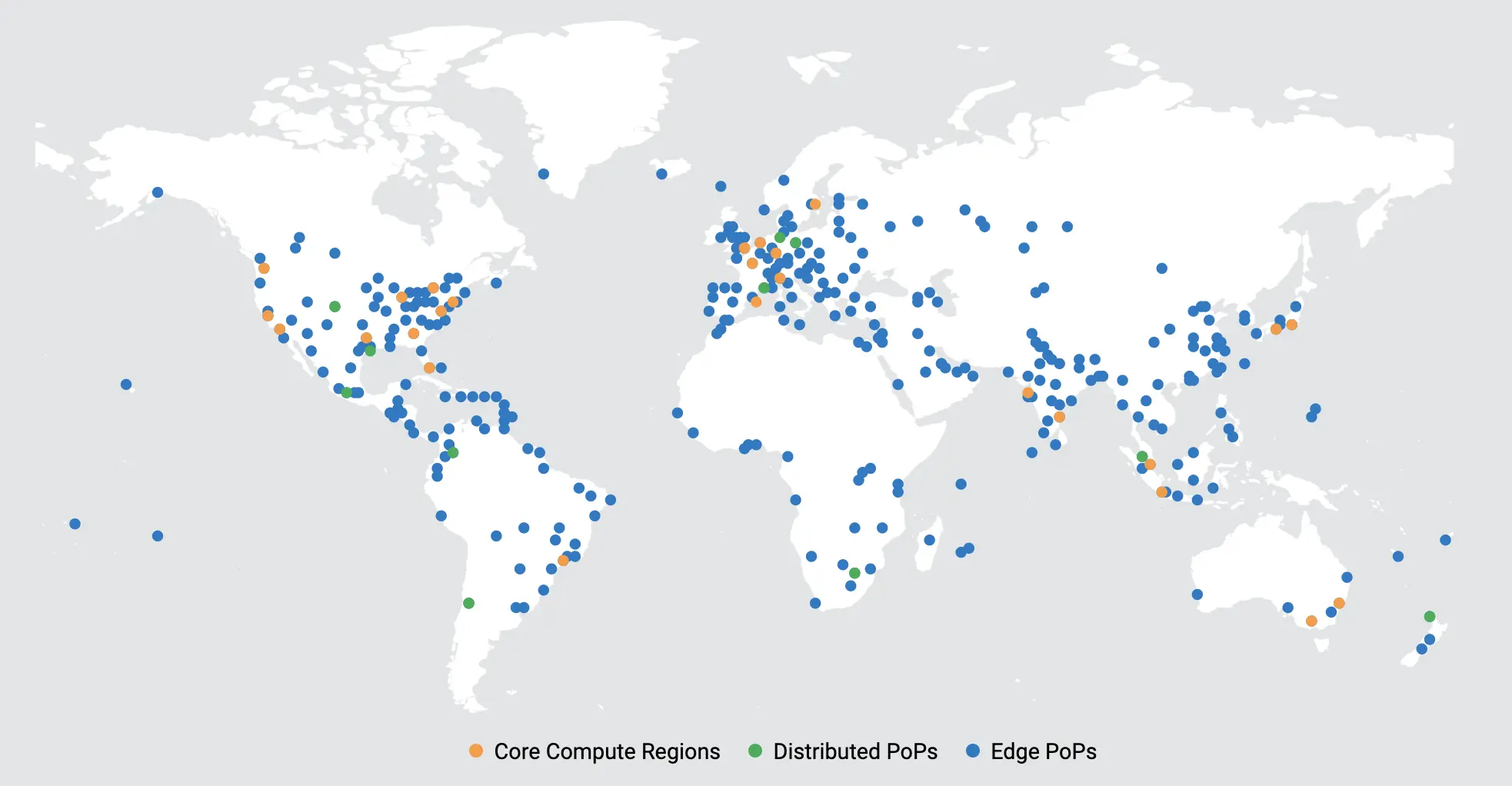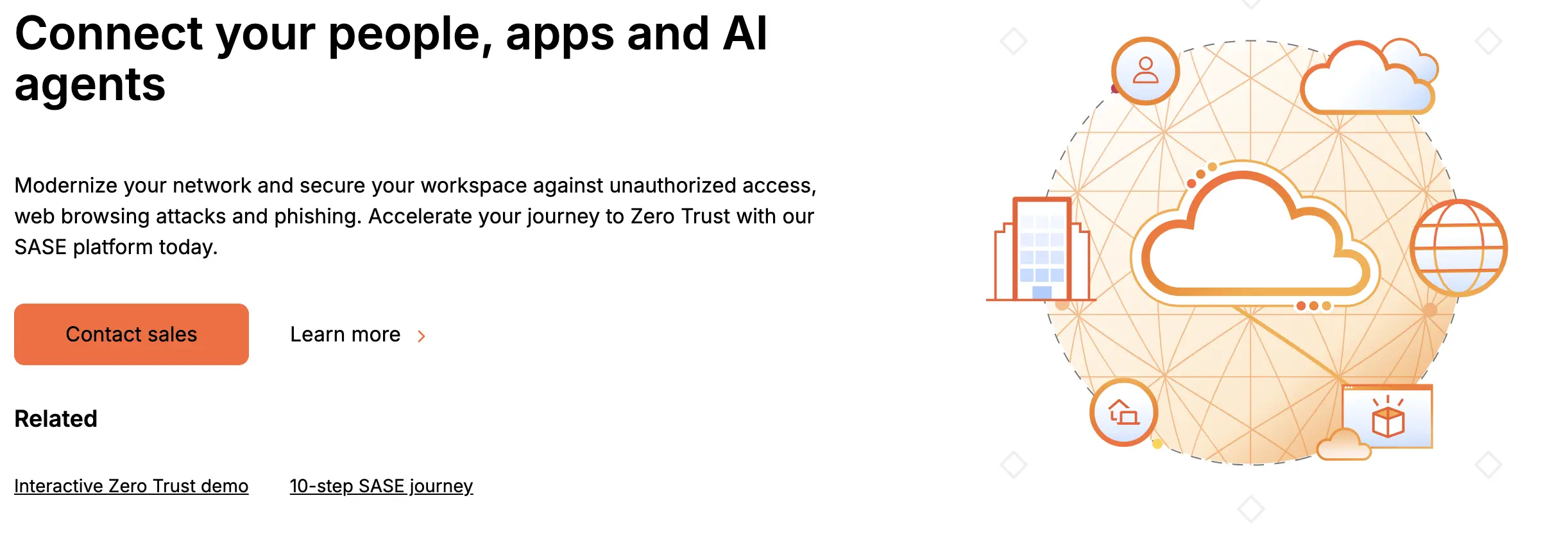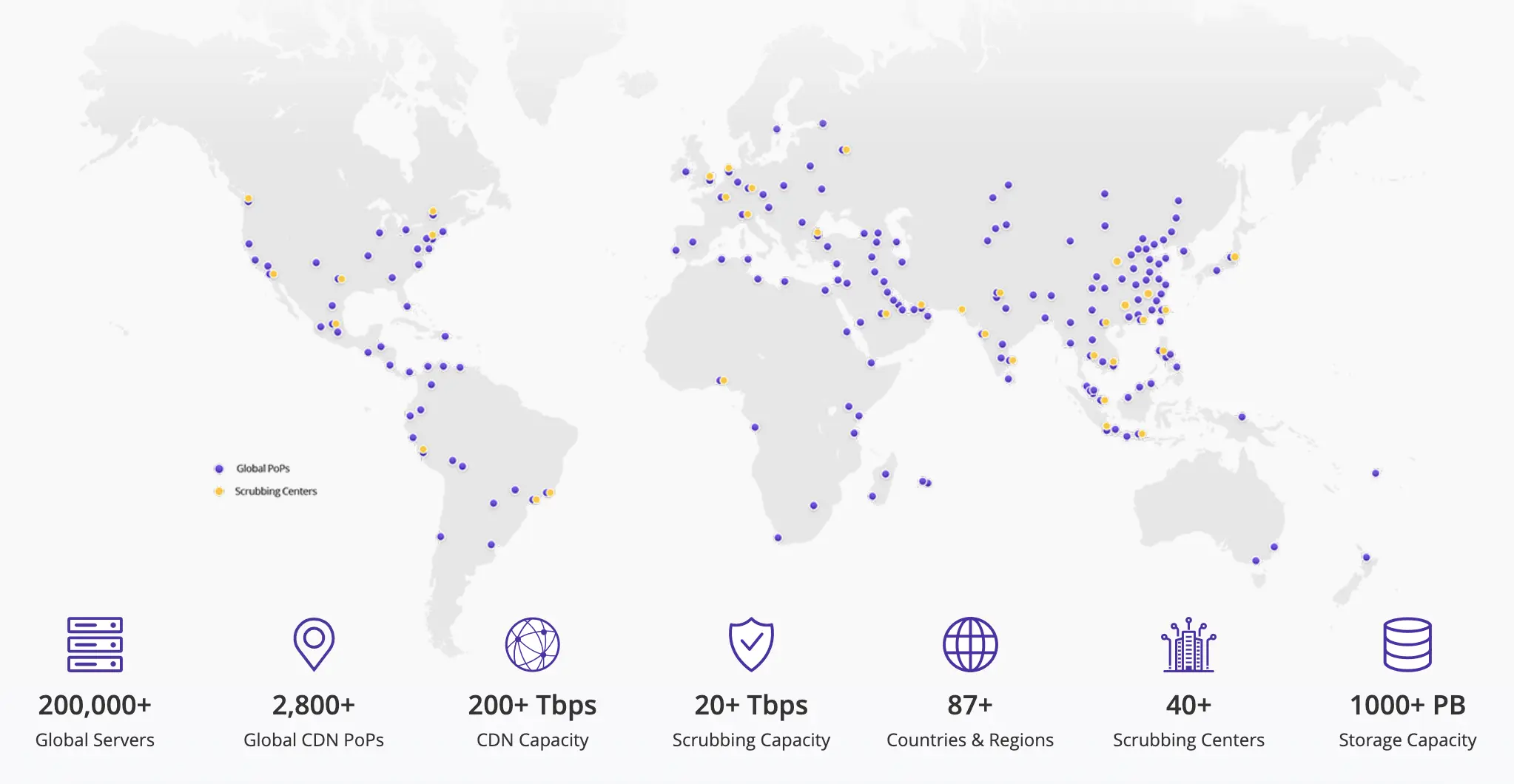CDN (Content Delivery Network): Meaning, Benefits, Implementation & Best Providers (2026 Guide)
The moment your page loads, a race begins between your server and your user’s patience. A CDN helps you stay ahead by reducing distance, boosting reliability, and giving visitors the seamless experience they expect.

Quick summary
In plain terms: CDN cuts distance, so pages load fast everywhere. The payoff is threefold:
lower latency (snappier UX and better Core Web Vitals),
higher resilience (traffic spikes and regional outages are absorbed by the network),
and stronger security (DDoS/WAAP and TLS at the edge).
CDNs pair especially well with modern architectures like Jamstack, where static assets and cached HTML shine at the edge. Below you’ll find how CDNs work, a practical implementation checklist, and criteria for picking the right provider for your stack and budget.
What is CDN (Content Delivery Network)?
A Content Delivery Network (CDN) is a group of servers distributed around the world that deliver website content from the location closest to each visitor. It reduces latency, speeds up load times, and improves reliability by caching files such as images, scripts, and videos at the network edge.
When someone visits your website, a CDN automatically routes their request to the nearest edge server, called a Point of Presence (PoP). That server delivers cached versions of static assets such as images, CSS, and JavaScript files. This shortens loading times and reduces strain on your origin server, which can then focus on dynamic requests like API calls or user-specific data.
In simple terms, a CDN acts as a performance and security layer between your website and your users. It ensures that pages load quickly and securely, even during traffic spikes or global surges in demand.
For more on how CDNs support modern web architectures, see our guide on static vs. dynamic delivery.
How Does a CDN Work?
Instead of fetching every file from the origin, CDN uses smart routing and caching to serve users from the most optimal location.
Here are the key mechanisms behind it:
Points of Presence (PoPs): Local data centers that store cached versions of your content. Each PoP serves users within its region.
Caching: CDNs save copies of static assets such as HTML, CSS, JavaScript, and images, so they can load quickly without repeated requests to the origin server.
Anycast Routing: Directs user requests to the nearest or least congested node to ensure stable performance during high traffic.
TLS and HTTP/3/QUIC: CDNs use modern encryption and transport protocols to secure data transfer while speeding up connection setup.
Origin Shielding: Routes all cache misses through a protected mid-layer to reduce the load on your origin infrastructure.
For deeper insights into how performance impacts user experience, see our guide on performance best practices.

Ready to supercharge your website?
Make your site faster, safer, and ready for global traffic.
Benefits of CDN
Implementing a CDN improves your website in several key areas: performance, SEO, security, and cost efficiency. Here are the most important benefits every modern business should know.
Faster speed and lower latency
A CDN stores your website’s assets in multiple locations around the world, so users download them from the nearest server. This shortens the distance data needs to travel and reduces latency. The result is a noticeable improvement in page load time and a smoother experience across all devices and regions.
Better SEO and Core Web Vitals
Search engines reward websites that load quickly and deliver a seamless user experience. By cutting response time and stabilizing performance, a CDN directly boosts key Core Web Vitals such as Largest Contentful Paint (LCP) and Interaction to Next Paint (INP). Faster, more stable sites keep users engaged longer and tend to achieve higher organic rankings. Learn how performance affects SEO in our guide on Core Web Vitals and traffic growth.
Improved reliability and scalability
A CDN can handle sudden traffic spikes by balancing requests across its global network. This prevents downtime during sales, campaigns, or viral content events. With less strain on your main infrastructure, you can maintain stable uptime even when demand surges unexpectedly.
Stronger security
Modern CDNs include advanced protection layers such as Web Application Firewalls (WAF or WAAP), TLS encryption, and Distributed Denial of Service (DDoS) mitigation. These features block malicious traffic before it reaches your origin server. Some networks also offer bot management and rate limiting for extra defense.
Lower operational costs
By caching and distributing content, a CDN reduces bandwidth consumption on your origin servers and offloads resource-heavy requests. This leads to lower hosting and infrastructure expenses, especially for high-traffic or media-rich websites. For smaller teams, a well-configured CDN can replace multiple performance plugins or tools, simplifying maintenance.
Etno Cafe needed a performant and secure website that'd support their growing brand thanks to its visual appeal and ease of management. They now add content quicker and engage customers more easily.
5/5
Clutch review
0.6 s
FCP
100
SEO

CDN Implementation Checklist
Setting up a CDN is straightforward when done step by step. Follow this practical checklist to ensure a smooth, secure, and measurable rollout.
1. Prepare your cache policy
Define which assets should be cached and for how long. Use HTTP headers to control this behavior.
Examples:
Cache-Control: public, max-age=31536000, immutable
Surrogate-Control: max-age=86400
Static files (images, CSS, JS): long max-age (weeks or months).
Dynamic pages or API responses: shorter max-age or no-store.
Set immutable for assets that never change to prevent revalidation.
2. Optimize images and videos
Modern formats reduce file size without quality loss.
Use WebP or AVIF for images.
Enable byte-range requests for video and audio to improve streaming efficiency.
Consider integrating image transformation APIs if your CDN supports them.
3. Enable modern protocols
Activate the latest transport and compression standards for better performance and security.
HTTP/2 and HTTP/3 (QUIC) for multiplexing and reduced latency.
TLS 1.3 for faster, more secure encryption.
Brotli compression for smaller text-based files (HTML, CSS, JS).
4. Use origin shielding
Add an origin shield layer to route cache misses through one protective node before reaching your origin. This prevents multiple simultaneous requests for the same file and reduces load on your main server.
5. Monitor key performance indicators
Track and optimize the metrics that reveal your CDN’s real impact:
Cache hit ratio – the percentage of requests served from cache.
95th percentile TTFB (Time to First Byte) by region.
Error rates and egress percentage.
Top cache miss keys – assets that fail to cache or expire too early.
Use your CDN’s analytics dashboard or real-user monitoring tools to evaluate these KPIs over time.
6. Test on a staging domain
Before pushing to production, validate your configuration on a dedicated subdomain, for example: cdn-staging.example.com
Check headers, cache behavior, and SSL/TLS configuration to ensure everything works as expected before going live.
Choosing a CDN: Decision Criteria
Not all CDNs are built the same. The right choice depends on your business goals, content type, and budget. Before you decide, evaluate the following key areas.
Global coverage and geography
A CDN’s performance depends heavily on its network footprint. If most of your audience is in Europe, North America, or Asia, make sure the provider has Points of Presence (PoPs) in those regions.For global brands, look for providers with strong coverage in both established and emerging markets. Some CDNs, like CDNetworks, excel in APAC reach, while Cloudflare and Akamai provide the widest worldwide presence.
Traffic profile and content type
Consider what kind of content you serve most often.
Dynamic websites or APIs: choose a CDN with edge compute options such as CloudFront Functions or Cloudflare Workers.
Media-heavy platforms: prioritize networks with optimized caching and byte-range streaming for video and audio.
Static websites and Jamstack builds: look for instant cache purge and seamless Git-based deployment.
Security and compliance
Modern CDNs are not only delivery networks but also security platforms. Check for built-in protection such as:
WAF or WAAP to block application-level attacks
DDoS mitigation for high-traffic resilience
TLS 1.3 and automatic certificate management for secure data exchange. If your website processes user data, confirm compliance with GDPR and regional privacy laws
Tooling and integration
Ease of setup matters. A good CDN should integrate smoothly with your current tech stack, CI/CD pipelines, or headless CMS. Look for:
REST or GraphQL APIs for automation
real-time analytics dashboards
log streaming or API hooks for DevOps workflows.
For example, teams using Jamstack benefit from CDNs that support atomic deployments and instant cache invalidation.
Vendor lock-in and migration
Avoid solutions that make it hard to move later. Choose providers with transparent configurations, exportable rules, and standard APIs. It’s wise to document your setup from day one so migration won’t become a technical roadblock if you switch providers.
Support and reliability
Even the best CDN may require troubleshooting during high-traffic events. Evaluate the provider’s support channels, response times, and SLA terms. For mission-critical services, select a vendor offering 24/7 support with dedicated engineers or enterprise escalation paths.
Pricing model
CDN pricing varies widely. The most common models include:
Per GB transferred (typical for static content)
Per request (common in high-traffic APIs)
CPU or server-group based (used by advanced providers like CDNetworks)
Estimate your expected data transfer and request volume before committing. Transparent dashboards and usage alerts help avoid unexpected costs.

Not sure which CDN fits your business?
Our experts will analyze your goals, traffic profile, and budget to help you choose and configure the CDN that delivers the best performance for your needs.
Best CDN Providers in 2026
The CDN landscape evolves quickly, but a few providers consistently lead the market with performance, reach, and reliability. Below is a curated list of top CDN services to consider in 2026.
Akamai

Akamai’s Connected Cloud powers one of the largest edge networks in the world, with over 4,100 edge PoPs across 131 countries and more than 350,000 servers. It excels in high-traffic, enterprise-grade delivery, media streaming, and advanced WAAP security.
Akamai stands out for its unmatched reach and reliability, though its complex setup and enterprise pricing can make it less accessible to smaller teams.
Amazon CloudFront

Amazon CloudFront now operates 600+ Points of Presence in 100+ cities across 50+ countries, tightly integrated with AWS services like S3, ALB, and Lambda@Edge. It’s a robust choice for APIs, video streaming, and large-scale delivery with granular control and real-time analytics.
Its deep AWS integration is a strength, but the pricing model and configuration complexity may challenge teams outside the AWS ecosystem.
Google Cloud CDN
Built on Google’s global edge and integrated with Cloud Load Balancing, Google Cloud CDN supports modern protocols like HTTP/3 and QUIC for efficient, secure delivery.
It’s ideal for teams already using GCP thanks to its transparency, predictable pricing, and easy monitoring. However, its limited flexibility outside Google Cloud and fewer customization options may not suit all infrastructures.
Cloudflare

Cloudflare operates in 330+ cities across 120+ countries, blending CDN performance, DDoS protection, and edge computing on one platform. It’s known for an easy setup, strong free plan, and a versatile developer ecosystem.
Cloudflare is a great all-rounder for most businesses, but advanced features like bot management and detailed analytics are reserved for paid plans.
Microsoft Azure
Azure Front Door (AFD) combines CDN, load balancing, and WAF functionality across 192 edge locations in 109 metro areas. It’s designed for enterprises running workloads on Azure, offering unified security and performance at the global edge.
It’s a powerful solution for Azure-based systems, but its complex pricing structure and learning curve can slow down adoption for newcomers.
CDNetworks

CDNetworks is an APAC-leading CDN and edge service provider known for its robust performance and extensive network reach, especially in emerging markets, including Southeast Asia, South Asia, Latin America, the Middle East, and Africa.
With 200+Tbps CDN capacity and 2,800+ PoPs spanning over 87 countries and regions, it offers reliable content delivery, media streaming, and a powerful suite of cloud security solutions.
Free and Entry-Level CDN Options
Free CDN plans can be a smart way to start small or test performance improvements. Cloudflare’s free tier, for instance, delivers reliable baseline protection and unlimited bandwidth.
The trade-off lies in advanced features such as bot management, rate limiting, and image optimization, which are available only on paid tiers. For startups or MVPs, this is often enough; for high-traffic or enterprise-grade projects, a paid plan ensures consistency and support.
CDN Providers Comparison (2026 Overview)
| Provider | Global presence (as of 2025) | Best for | Security features | Unique strengths | Pros | Cons | Pricing model |
|---|---|---|---|---|---|---|---|
| Akamai | ~4,100+ edge PoPs across 131 countries | Enterprise delivery, large global platforms, media streaming | WAAP, DDoS protection, TLS 1.3, bot management | One of the most distributed networks globally; advanced analytics and routing | • Exceptional global reach and uptime • Enterprise-grade security and performance • Deep analytics and optimization tools | • Complex setup for smaller teams • Premium pricing • Requires technical expertise | Custom enterprise pricing |
| Cloudflare | 330+ cities in 120+ countries | All-in-one edge performance for businesses of any size | WAF/WAAP, DDoS mitigation, TLS 1.3, bot protection | Developer platform (Workers), AI crawler controls, free and paid tiers | • Fast global network and easy setup • Strong free plan and developer tools • Broad feature set beyond CDN (security, DNS, edge compute) | • Some advanced security tools require Pro+ plans • Detailed analytics limited on free tier | Free, Pro $25/mo ($20/mo annual), higher tiers available |
| Amazon CloudFront | 600+ PoPs (edge locations + regional caches) across 100+ cities in 50+ countries | APIs, video streaming, AWS-integrated services | AWS Shield, WAF, TLS 1.3 | Deep AWS integration, real-time logging, edge compute (Lambda@Edge) | • Seamless AWS ecosystem integration • Excellent scalability and flexibility • Highly configurable caching and routing | • Pricing can be complex • UI less intuitive for non-AWS users • Support billed separately | Pay-as-you-go per GB/request |
| Google Cloud CDN | Global Google Edge via Cloud Load Balancing | Websites or APIs hosted on GCP and hybrid origins | DDoS protection, HTTPS, TLS 1.3 | Seamless GCP integration, HTTP/3 and QUIC support, Cloud Monitoring | • Excellent performance within GCP stack • Transparent pricing and usage data • Native support for modern protocols | • Limited flexibility outside GCP • Fewer customization options than Cloudflare or Akamai | Pay-as-you-go by usage |
| Microsoft Azure Front Door | ~192 edge locations in 109 metro areas | Azure workloads, global enterprise apps | WAF, DDoS protection, TLS 1.3 | Combines CDN, load balancing, and security | • Strong integration with Microsoft ecosystem • Unified performance and security layer • Ideal for hybrid and enterprise environments | • Complex pricing structure • Some legacy CDN SKUs still in transition • Requires Azure experience | Consumption-based (data transfer + routing rules) |
| CDNetworks | 2,800+ PoPs across 70+ countries | APAC coverage, media-heavy and security-driven sites | WAAP, DDoS mitigation, 40+ scrubbing centers | Exceptional Asia-Pacific reach, transparent CPU-based pricing | • Massive global infrastructure backbone • High-performance content delivery and media streaming • Full HTTP/3 protocol support • Integrated, multi-layer cloud security • 24/7/365 expert technical support | • Pricing is not publicly listed • Advanced features and configurations may require technical expertise | CDNetworks does not provide standard pricing on its website. You can explore its features with a 14-day free trial |
CDN Benefits in Jamstack and Headless Architectures
Jamstack and headless architectures rely on pre-rendered content, static assets, and API-driven data. This approach separates the frontend from the backend, improving flexibility and scalability. A Content Delivery Network (CDN) fits naturally into this model, serving pre-built pages and media directly from edge locations close to users.
At Naturaily, we have several years of experience building Jamstack-based websites that combine CDNs with static generation and caching. The result is faster delivery, stronger security, and lower hosting overheads. You can explore this in our Etno Cafe case study, where a Jamstack setup powered by CDN helped create a faster, more scalable digital experience.
Why Jamstack and CDNs work perfectly together
Traditional monolithic CMS platforms deliver content dynamically from a central server, which often creates bottlenecks. In contrast, a headless CMS separates the content repository from the presentation layer. Jamstack sites fetch that content during build time, then deploy fully rendered pages to a CDN.
Once deployed, the CDN distributes these static assets globally. Users receive responses from the nearest Point of Presence (PoP), eliminating server-side processing delays. This leads to faster load times, improved Core Web Vitals, and reduced infrastructure costs.
Performance and SEO advantages
Speed: CDNs cache HTML, images, and assets at the edge, which allows pages to load almost instantly.
Scalability: High-traffic surges are handled by distributed PoPs instead of a single origin.
Security: Static content and CDN-level WAF or WAAP protection reduce attack surfaces.
SEO: Faster delivery improves search rankings and user retention.
This synergy between Jamstack and CDNs ensures your site performs consistently across devices and geographies.

Want a faster, more scalable website?
Get a tailored CDN and Jamstack strategy designed around your goals, traffic, and budget. We’ll help you launch with confidence.
Industries That Benefit Most from CDN Implementation
Beauty, health & wellness
In this competitive market, smooth online experiences directly influence trust and conversions. CDNs accelerate product pages, booking systems, and video tutorials, ensuring customers enjoy fast, secure browsing on both desktop and mobile. Global PoPs also support international expansion for wellness brands selling across regions.
EdTech
E-learning platforms rely on uninterrupted access to course materials, videos, and interactive sessions. CDNs deliver content from the nearest PoP to each student, reducing lag during live sessions and maintaining video quality worldwide. This ensures consistent performance during enrollment spikes and remote classes.
Fashion & apparel
Online stores in the fashion industry depend on visuals, and those assets are often heavy. A CDN speeds up high-resolution image and video delivery, optimizes lookbook performance, and supports seasonal traffic surges during drops or sales events. The result: faster page loads and higher customer retention.
Finance and fintech
Financial platforms require both speed and security. CDNs minimize latency in real-time data delivery, protect transactions with DDoS and WAAP defenses, and maintain reliable uptime for trading dashboards or payment systems. Fast response times build customer confidence in fintech and banking solutions.
Capitalise needed a modern website to replace their rigid legacy CMS and enable data-driven growth. We created a fast, headless platform with built-in A/B testing. Easy to experiment, optimize, and boost conversions.
48%
growth in average monthly traffic
31%
faster mobile LCP
35%
faster CMS content update

Manufacturing and B2B services
For manufacturers and B2B portals, CDNs enable quick access to product catalogs, documentation, and partner dashboards across regions. They reduce latency for clients in global supply chains while securing sensitive business data through encrypted, edge-level delivery.
Furniture & home decor
Rich visuals and AR product previews demand strong performance. CDNs handle heavy image and 3D model files efficiently, maintaining quality without long loading times. Faster browsing encourages customers to explore more products and complete purchases.
Real estate
Virtual tours, property images, and location-based content can slow down websites. CDNs ensure those assets load instantly, no matter the visitor’s location. They also improve SEO visibility for real estate listings by speeding up page rendering across devices.
Healthcare
Healthcare platforms, telemedicine services, and patient portals require both privacy and reliability. CDNs help deliver secure, encrypted connections under TLS 1.3, reduce downtime during traffic peaks, and support HIPAA-compliant data handling for international audiences.
Agencies
Creative and digital agencies benefit from CDNs when hosting client projects, demos, or high-traffic campaigns. CDNs guarantee uptime, optimize load times for portfolio sites, and simplify global content distribution. This makes agencies more efficient and client-ready.
FGS Global needed a secure, flexible website that captured their brand and scaled with their global presence. We built a fast, headless solution that makes updates effortless and brand consistency simple.
5/5
Clutch review
Custom
search engine
1500+
content items migrated

SaaS
For SaaS products, speed directly affects user retention and conversion. CDNs reduce latency for application dashboards and APIs, handle global user bases efficiently, and provide analytics to track performance by region. Edge caching and security layers keep SaaS platforms scalable and protected.
Glossary: key terms used in this article
PoP (Point of Presence)
A local data center or edge server that stores cached website content and delivers it to users from the nearest location for faster loading.
Anycast
A routing method that directs each request to the closest or least busy CDN server, improving speed and reliability.
Origin Shield
An extra caching layer that reduces load on the origin server and prevents multiple requests for the same resource.
RUM (Real User Monitoring)
Collects real-time performance data from users’ browsers to measure metrics like TTFB and Core Web Vitals by region.
WAAP (Web Application and API Protection)
Protects both websites and APIs from attacks such as SQL injection, XSS, and malicious bots at the CDN edge.
SASE (Secure Access Service Edge)
A framework that merges CDN delivery, Zero-Trust access, and security controls into one
Why a CDN Is Essential for Global Website Performance
If most of your visitors are local, a lightweight solution or built-in CDN from your hosting provider may be enough. But for businesses expanding internationally, handling heavy media, or prioritizing security, a dedicated CDN brings measurable gains in performance, uptime, and user satisfaction.
The key is balance. Start with clear performance metrics, define caching rules, and choose a provider that matches your content type and growth plans.
At Naturaily, we help companies plan, implement, and optimize CDN strategies that align with their architecture and business goals. Whether you’re building a new platform or modernizing an existing one, our team can guide you from analysis to deployment.
Let’s talk about how a CDN can accelerate your business.
FAQ
CDN explained
Ready to accelerate your website with the right CDN?
Whether you need a full CDN setup or optimization of your current infrastructure, we’ll guide you through every step, from analysis to implementation.



